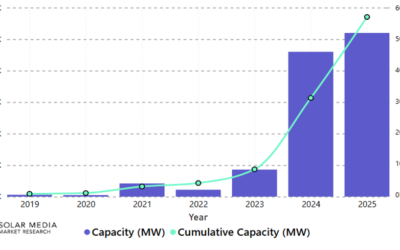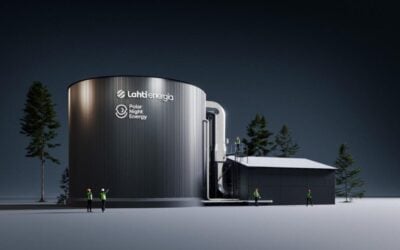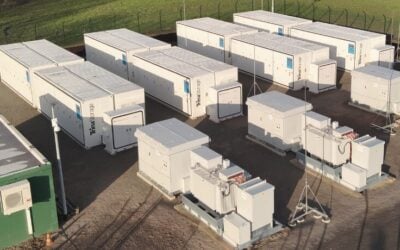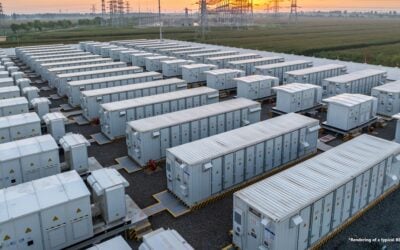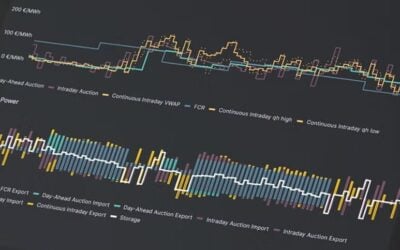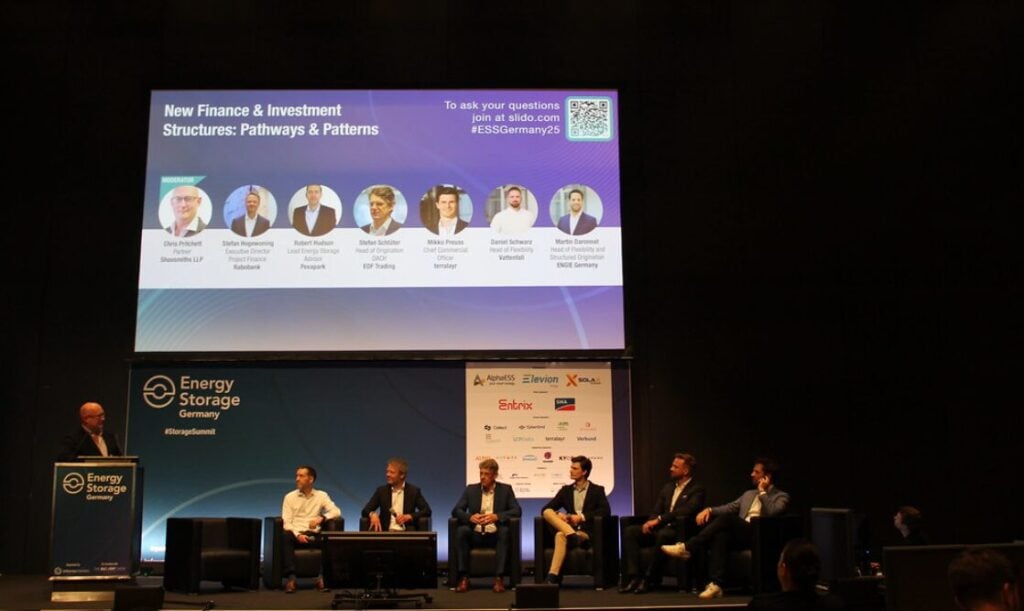
Terralayr has made headlines recently with its BESS aggregation tolling platform, executing long-term tolls in Germany with big power firms RWE and Vattenfall, but how unique are these deals in reality?
We caught up with the company’s CCO, Mikko Preuss, at last week’s Energy Storage Summit Germany 2025.
“The world has seen tolling deals before, but we believe these are the first with this kind of set up,” Preuss said at the three-day event, which was co-located with Solar Media parent company Informa’s The Battery Show Europe 2025 (3-5 June).
Indeed, tolls are becoming increasingly common in the battery energy storage system (BESS) industry, in Germany and elsewhere, as owner-operators look to secure project financing from banks and more risk-averse investors like pension funds, infrastructure funds and the like.
Try Premium for just $1
- Full premium access for the first month at only $1
- Converts to an annual rate after 30 days unless cancelled
- Cancel anytime during the trial period
Premium Benefits
- Expert industry analysis and interviews
- Digital access to PV Tech Power journal
- Exclusive event discounts
Or get the full Premium subscription right away
Or continue reading this article for free
Terralayr’s recently announced toll deals with Vattenfall and RWE covered capacity from multiple projects in Germany which is unique, but again not new: Octopus and Gresham House’s major deal last year covered 14 projects in the UK. So how is Terralayr’s different?
Disentangling asset owner, tech provider and offtaker paradigm
Preuss said: “We combine a fleet of underlying assets into one amount of capacity, 55MW in the case of Vattenfall, and have provided both the assets and tech platform to manage them. We are disentangling those roles of asset owner, platform provider and offtaker.”
The key difference is providing both the assets and the tech platform, Preuss explained. Octopus Energy has its own mature tech platform, Kraken, which might explain why it is the only major multi-project deal we had heard of before Terralayr’s announcements.
“The toll is not on an individual asset. Our overall strategy is to contract out 50% and create a clean slice for the offtaker. We’ve earned the trust of counterparties and that means a lot, and is something we can take forward beyond these initial toll deals,” Preuss added.
Preuss and CEO Philipp Man discussed Terralayr’s platform in detail in an interview last year.
Offtakers connect to Terralayr’s API through which they can steer the capacity of the contracted BESS capacity across all relevant markets. The firm offers its solution for third party BESS owners as a service product, though these deals have so far covered its own projects.
Not tied in to a specific project
The tolls are also relatively unique in that they are tied to BESS capacity via the platform and not BESS capacity from a specific project or projects. This should in theory mean better availability, since if one site goes down, you can more easily swap its capacity out for another, assuming there is enough capacity on the overall platform.
“The toll deal is structured so that if a 10MW asset goes down you can replace it with another one, that is something the offtaker gets. There are obviously contractual obligations about megawatts and performance specs, but it doesn’t matter which physical asset is being used,” Preuss explained.
“The offtakers actually prefer this virtual setup as it makes operations easier and they consider it as asset-light.”
What about project owners?
That all concerns offtakers and what they get, so what about project owners in Germany looking to put their BESS projects on the platform? Energy-Storage.news asked Preuss if Terralayr’s long-term ambition was for its own platform to be a bankable offtaker counterparty for project owners to then secure project financing, rather than the actual offtakers themselves.
“We are working towards that, but it might take some years,” Preuss said, explaining what Terralayr offers to project owners before that point.
“We already now can offer solutions to third-party developers and investors. If Developer A develops a 100MW asset, their target structure is 70% tolling, you could enter a 70% toll with a bankable counterparty via our platform and have merchant optimisers for the remaining 30% onboarded onto our platform to trade the battery in the short term. By this, you can combine the best of both worlds.”

